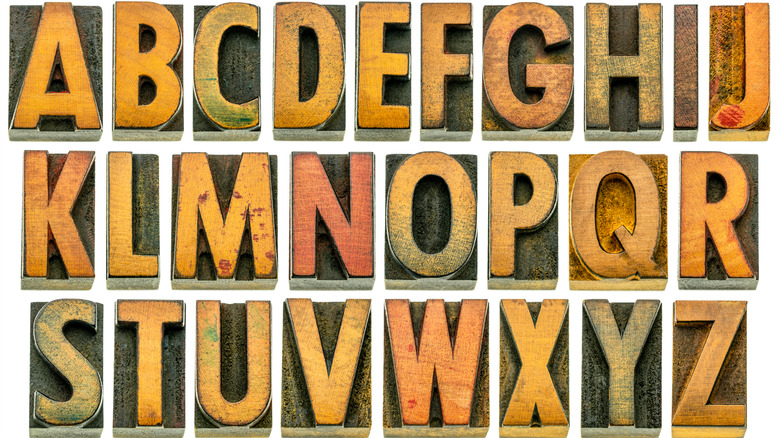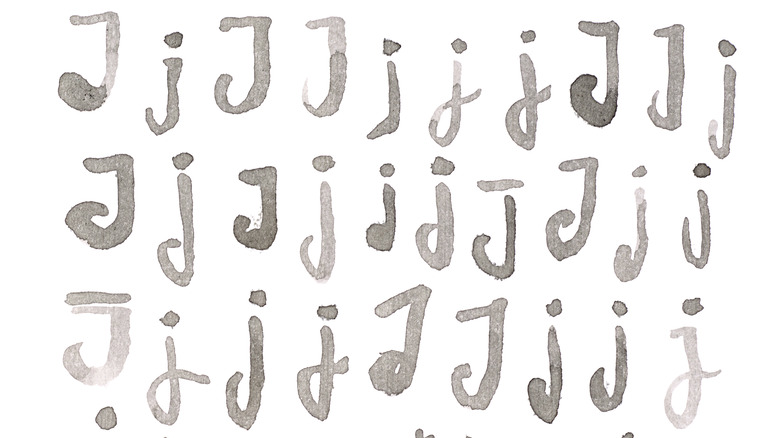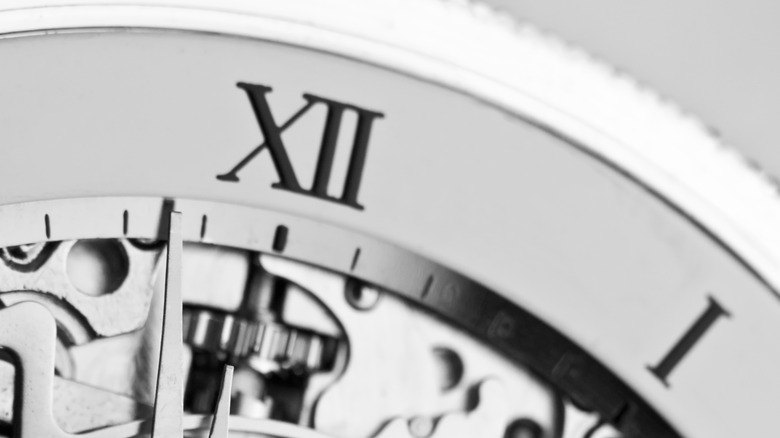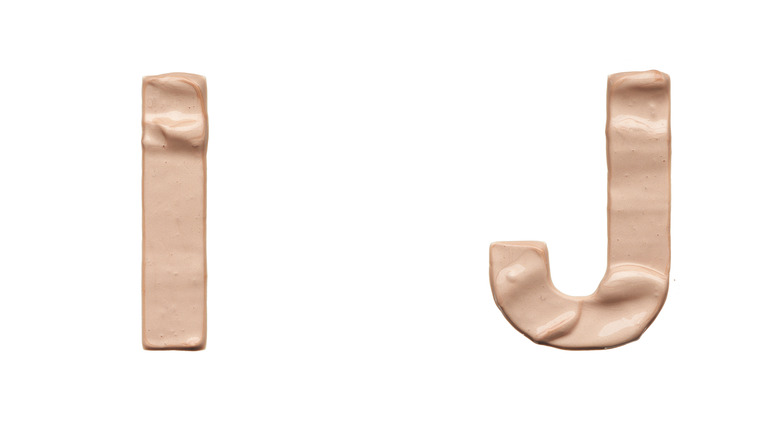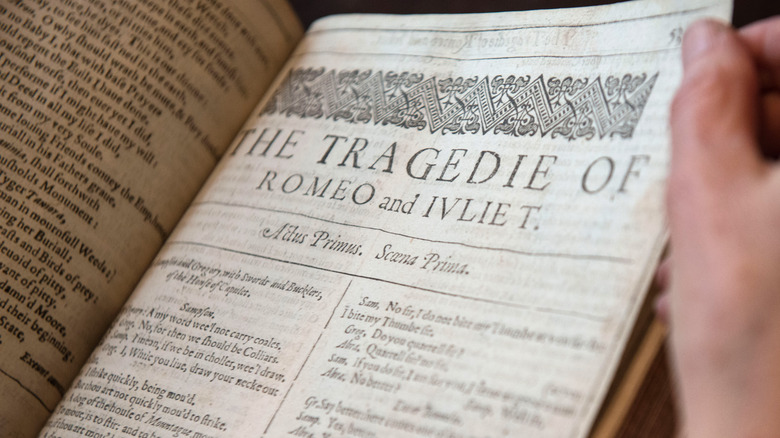This Was The Last Letter Added To The Alphabet
You can probably recite the alphabet without any effort, but this 26-letter amalgamation of letters has a fascinating history. Considering language is complicated, it is not surprising to know that symbols representing it evolved throughout history. Unsurprisingly, the English alphabet has Greek origins. According to Britannica, the Greek alphabet system has been in pace for some 3,000 years, and has undergone only a few adjustments.
Over time, some letters were removed from the alphabet. Mental Floss explains that over the millennia, letters that didn't make the cut include thorn, wynn, eth, yogh, ash, and ampersand. While some letters were removed, others were added. And while you might guess that the letter z was the last letter to be added to the alphabet, you'd be wrong. In fact, the last letter to be added to the alphabet sits closer to the beginning, next to the letter that is at least partially responsible for its origination.
The last letter added to the alphabet was J
The last letter to be added to the alphabet is J. So how is it that this particular letter came to be added? The answer is somewhat complicated because J didn't even begin technically as a "letter." Tracing the origins of the typographic symbol we now know as the letter J, we have to go back thousands of years to the time of Roman numerals, which are so old that no one actually knows their origin. Britannica reports that these symbols date back to at least the third century, noting that they were probably created out of a necessity to help with counting.
There aren't many Roman numerals — seven to be exact. They are I, V, X,L, C, D, and M, representing the numbers 1, 5, 10, 50, 100, 500, and 1,000, respectively. Along with these numbers, something that looks like the letter J was also used, but it wasn't exactly a letter as much as a symbol, per Britannica.
J began as a swash
In the early stages of its use, J appears to have served a distinct purpose. Dictionary reports that the letter was initially designed to denote the end of a series of ones in Roman numerals. For instance, viij would represent the number eight, with the letter j, known as a swash, marking the end of the series. While there is no way to know for certain, it appears as though the swash may have been used to remove any confusion while trading.
The swash was apparently associated only with numerals because it is not present in what is believed to be the Classical Latin alphabet or the Roman alphabet. In addition, there is no record of a phonetic sound associated with the swash in those languages. That said, some ancient Semitic languages had something that looked like the letter J, which was pronounced like the Y in the word yacht.
I and J were used interchangeably
Jumping ahead several hundred years, something that looked like an uppercase J appeared in medieval manuscripts, according to Britannica. In these cases, it denotes the uppercase I when it was used in a prominent position. This symbol looked like a J, and its phonetic sound was different from the letter I.
In the middle ages, the upper case I was elongated to look something like a J. Experts believe that this letter was probably pronounced like the "y" in the yacht. Later languages would begin to use the letter J to pronounce the hard G sound in words like ginger. At some point, I and J were used interchangeably. In addition, I and J were used as the same letter to represent both the vowel I as well as a consonant phonetically similar to G. As other languages adopted the letter J, it adopted more distinct sounds (via Britannica). If you're thinking that using a letter that wasn't technically in the alphabet would be slightly maddening, you'd be right.
A Renaissance grammarian took matters into his own hands
Strangely, it would take years for this frustration to reach such a peak that someone felt motivated to do something about it. And that someone would be none other than a grammarian. His name was Gian Giorgio Trissino, and in 1524 he set out to improve linguistics in his native Italian tongue (via Reader's Digest).
In an essay, Trissino argued that I and J should be separate letters, with I representing the vowel it was primarily known for and J representing a consonant. Apparently, this change was accepted, but we don't know exactly how long it took for J to earn its place in the alphabet. Reader's Digest reports that the difference between the two letters was discussed in a book published over one hundred years later in 1633. Dictionary explains that this distinction is somewhat important for several reasons with one being that it changed the Greek spelling of Iesus to Jesus.
J is versatile, but the least used letter in the alphabet
J is versatile — it can sound like a vowel and a consonant. This likely stems from the fact the letters were used interchangeably for so long before Trissino came along. J has a multitude of pronunciations ranging from the G sound in "jump" to the H sound in "jalapeño," and W sound in "marijuana." J may be versatile, but Reference points out that it is one of the least used letters in the English alphabet.
While the letters I and J have an interesting past, they are not the only two letters that share an intriguing connection. Britannica reports that the letter V eventually morphed into the letters U, V, and W in the modern English alphabet. That said, it's hard to beat J as the letter with the most varied history, moving from a simple symbol to a full-fledged letter.
